A Short Pond Recap and Update
It has been a number of years since the village pond was dredged (to some extent) by a contractor, using funds secured from the Allerton Park Landscape Fund (I presume, though the previous Clerk’s notes/emails aren’t available to us). This fund is part of a community benefit scheme associated with the Allerton Waste Recovery Park (often referred to as the “incinerator”), designed to support local environmental and sustainability projects. Since that time, we’ve been working steadily to improve water quality and oxygenation – hopefully turning the pond into a healthy little habitat that both people and wildlife can enjoy, right in the heart of the village.
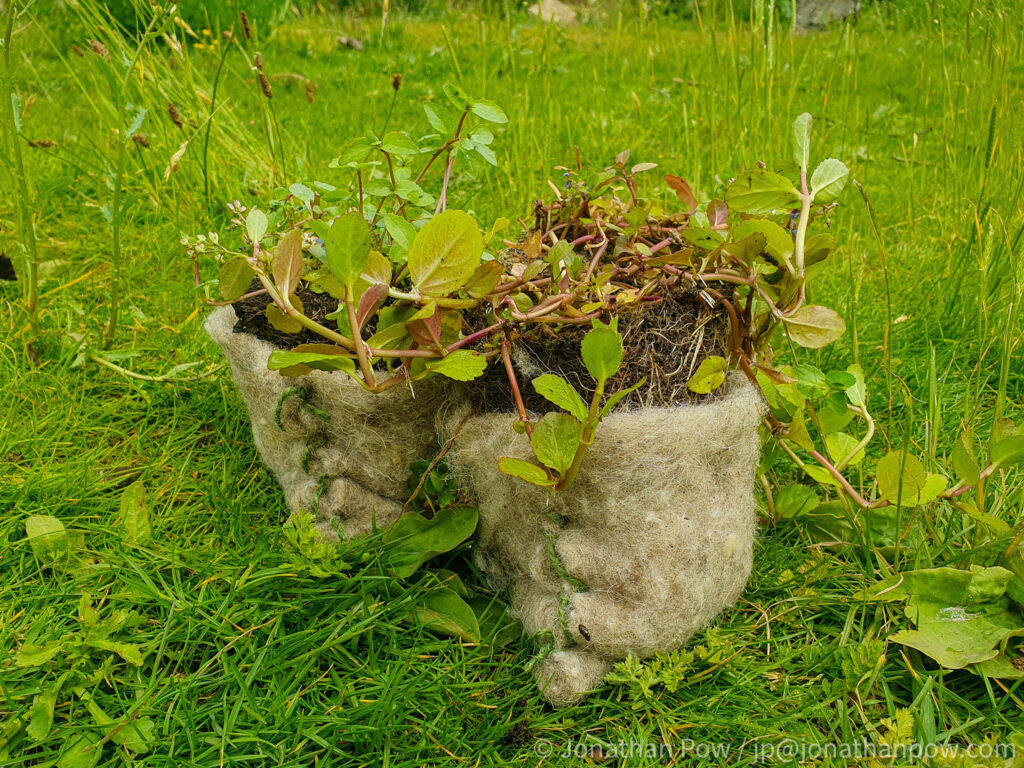
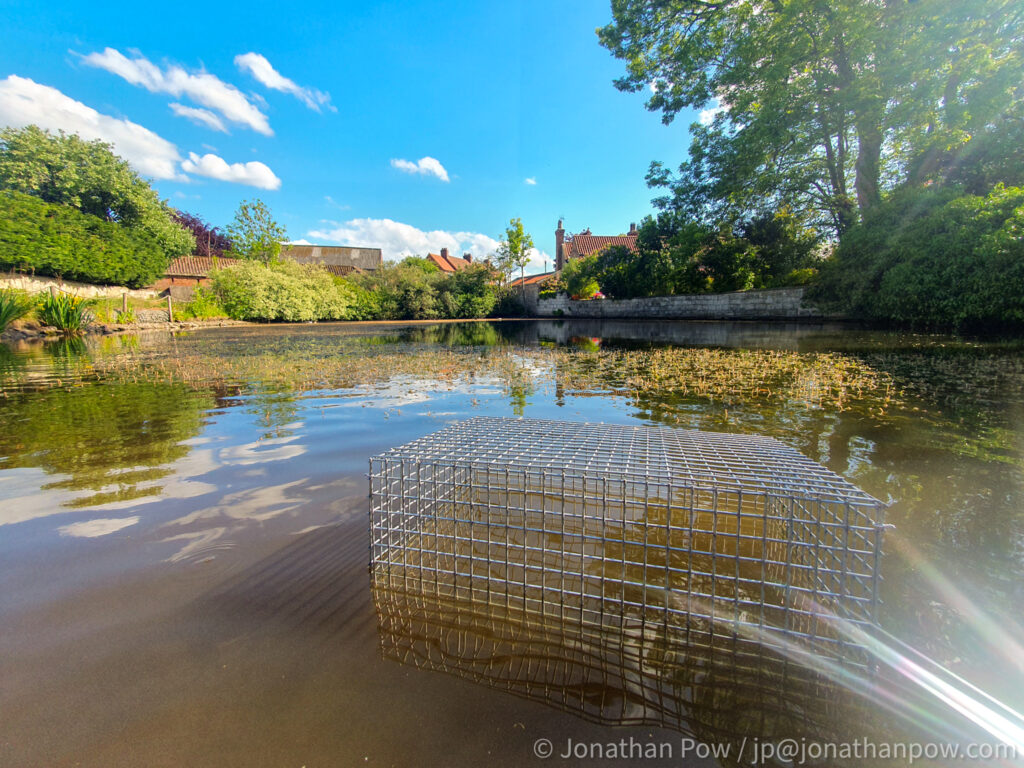
Working Towards a Self-Sustaining Ecosystem
A key aim has been to encourage a low-maintenance, self-sustaining ecosystem by using native plants, grasses, and marginal wildflowers that are not only attractive but also appropriate for the size and balance of the pond. We’ve tried to avoid fast-spreading or invasive species that could take over, instead favouring those that will establish themselves steadily without requiring constant intervention. This careful approach will hopefully ensure long-term diversity and health, both above and below the waterline.
Expert Advice and Water Testing
Earlier in the year, we enlisted the services of Alison Newsham from Harrogate Aquatic, who kindly came out to quite literally “test the water” and offer advice on improving both water quality and plant diversity. We had a wide-ranging discussion covering everything from filtration methods to plant types and general pond health.
One interesting natural method we discussed was the use of barley straw bales. As these decompose, they release small amounts of hydrogen peroxide, which can help keep the water clearer by gently limiting algae growth – a traditional and environmentally friendly technique for ponds like ours.
Curly Pondweed – An Understated Ally
Although not newly introduced, curly pondweed (Potamogeton crispus), which we planted around 2022, has quietly become one of the pond’s most valuable residents. In warmer months, it now covers roughly 50% of the pond’s surface. This might sound excessive, but in reality, it plays a vital role in maintaining water quality. The plant competes with algae for nutrients, and by shading parts of the water, it helps prevent algal blooms during hot spells — a common issue in shallow ponds exposed to summer sun. Its presence also improves oxygenation and provides shelter for aquatic life, including young fish and amphibians (we hope!). While we’ll keep an eye on its spread, for now it seems to be balancing the ecosystem rather than overwhelming it.
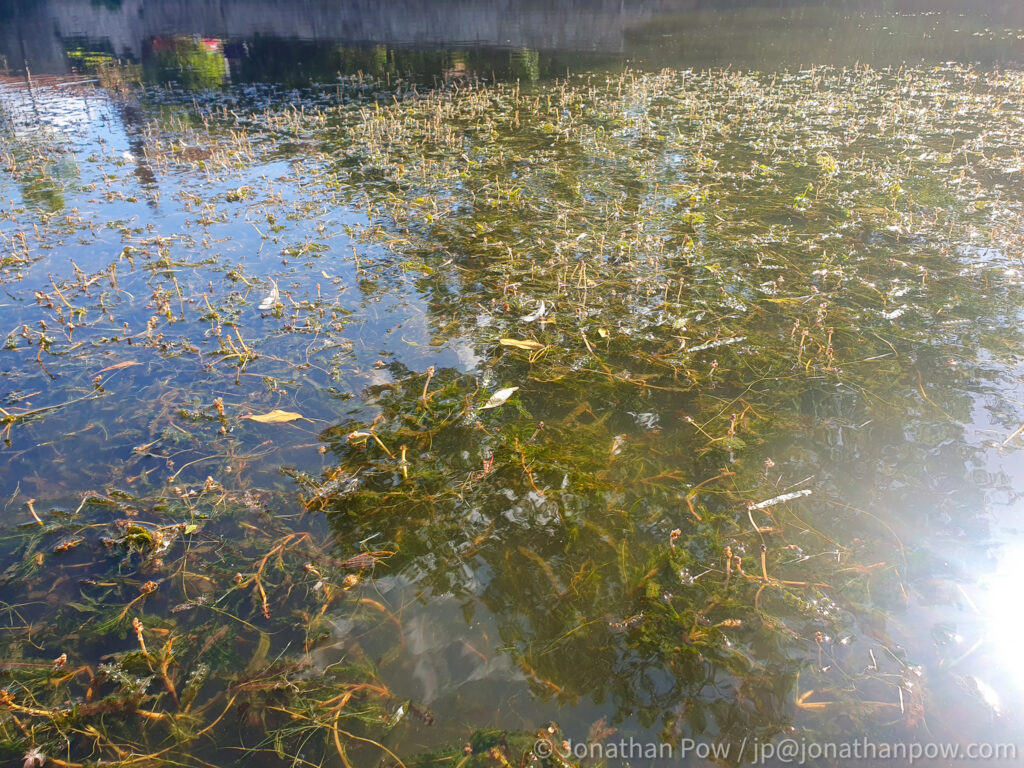
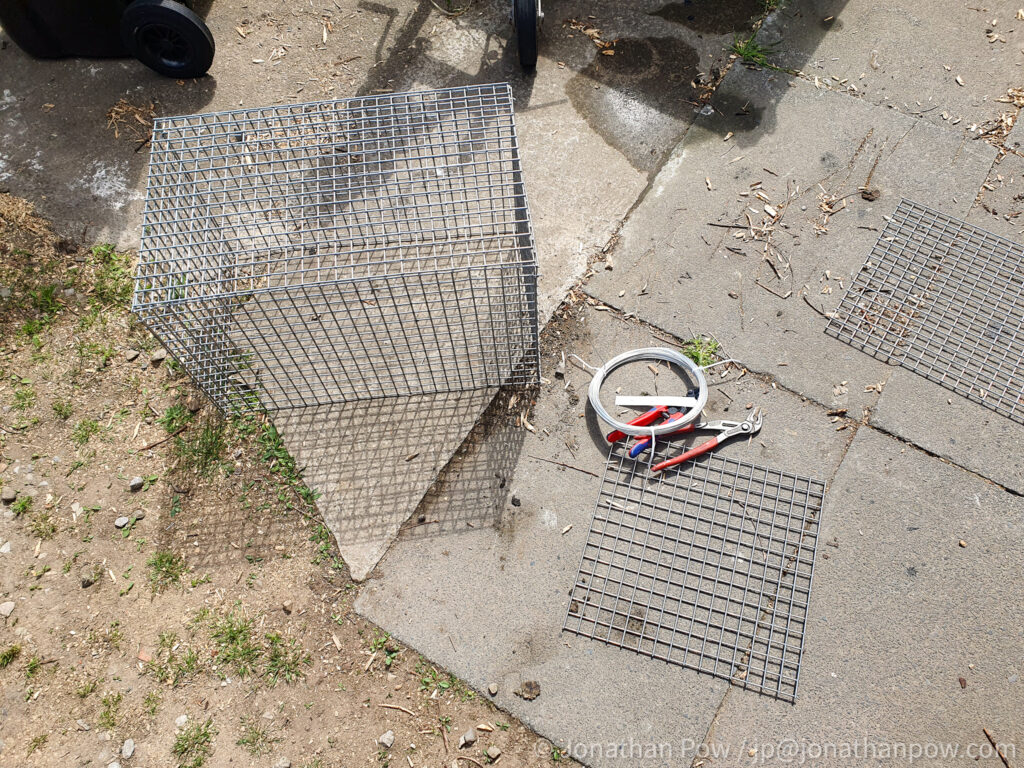
Protecting Young Plants from Ducks
One of the more pressing challenges we face is, ironically, the ducks. While much loved, they do have a habit of pecking at young plants before they have a chance to take root. To help give the plants a fighting chance, I came up with the idea of creating protective cages using 25mm galvanised weld-mesh.
These mesh cages are small enough to prevent the average duck — or indeed a moorhen — from reaching through with their beaks, while also avoiding the risks posed by gabion baskets of little heads getting stuck. Unlike the gabion baskets, selected for suring up the road edge, these don’t have plastic coatings that may break down over time and introduce microplastics into the water. Weld-mesh, by contrast, is solid steel, around 3mm thick, and galvanised to prevent rust — so it should last for many years without degrading.
Planting Veronica beccabunga
The first trial cage has now been planted with four specimens of Veronica beccabunga, more commonly known as brooklime. This is a native marginal plant that thrives in damp conditions and spreads gradually via creeping stems. It produces small, bright blue flowers and also provides excellent cover and shelter for aquatic invertebrates and young amphibians.
Once well rooted, it should be more resilient to curious ducks, and in time we hope to see it filling out the cage and spilling naturally into the pond margins.
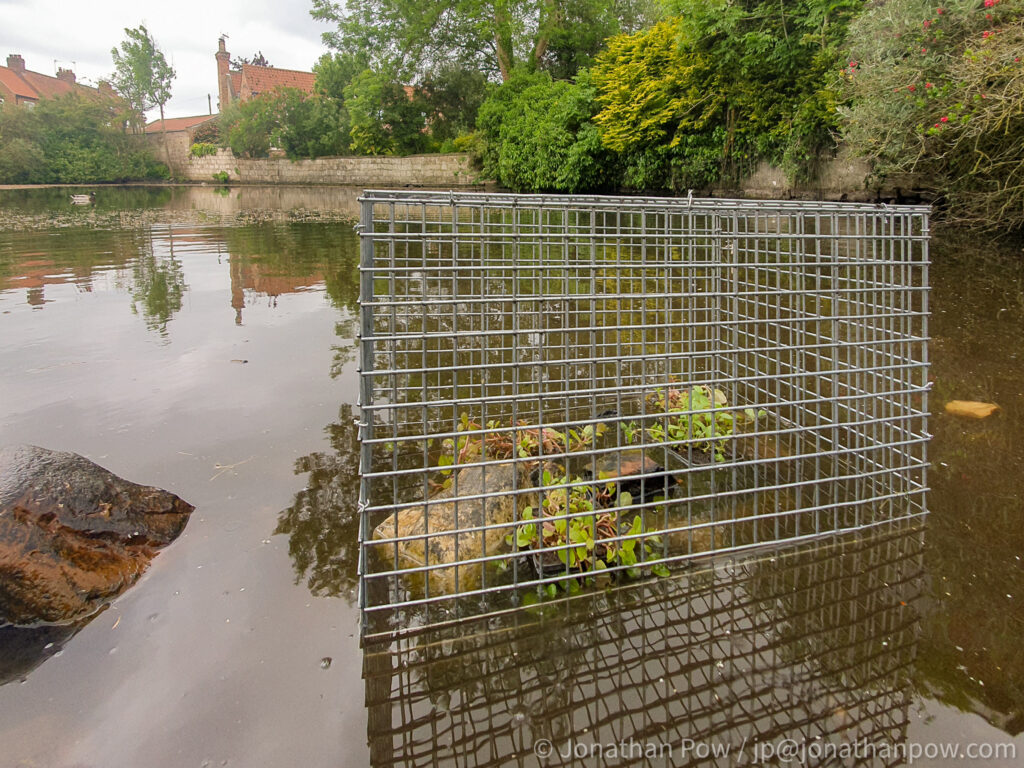
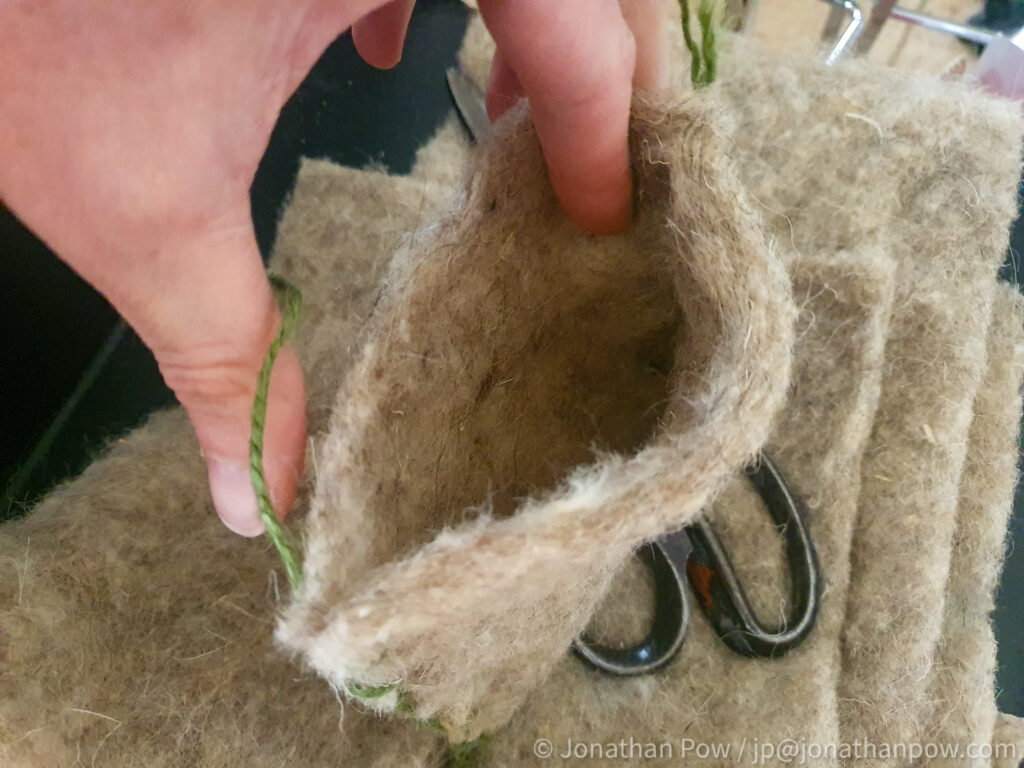
Natural Planting with Sheep’s Wool
As an extra measure, I’ve also created small planting pouches from sheep’s wool insulation and stitched them with biodegradable cotton thread. These offer a bit of initial protection to the roots and give them something soft and natural to grow through. Over time, the wool will biodegrade completely, by which point the plants should be firmly anchored.
Brooklime spreads by creeping along the soil or bank surface, and we hope that as it does, it will also help to stabilise the pond edge. We’ve noticed the banks have been vulnerable to erosion, particularly when the water level fluctuates with rainfall. These plants should act almost like a living net, helping to “shore up” the edge and prevent further loss of soil.
What Next?
This is just the beginning. If the cages prove successful and the brooklime establishes itself as hoped, we plan to expand the planting to other parts of the pond using the same approach. As always, we welcome feedback or ideas from villagers and hope that over time, this will grow into a space that supports a wide range of native species — from frogs and newts to dragonflies, and perhaps even the occasional visiting heron.
As someone has discovered, we do already have a frequently visiting village otter or two, caught on camera!


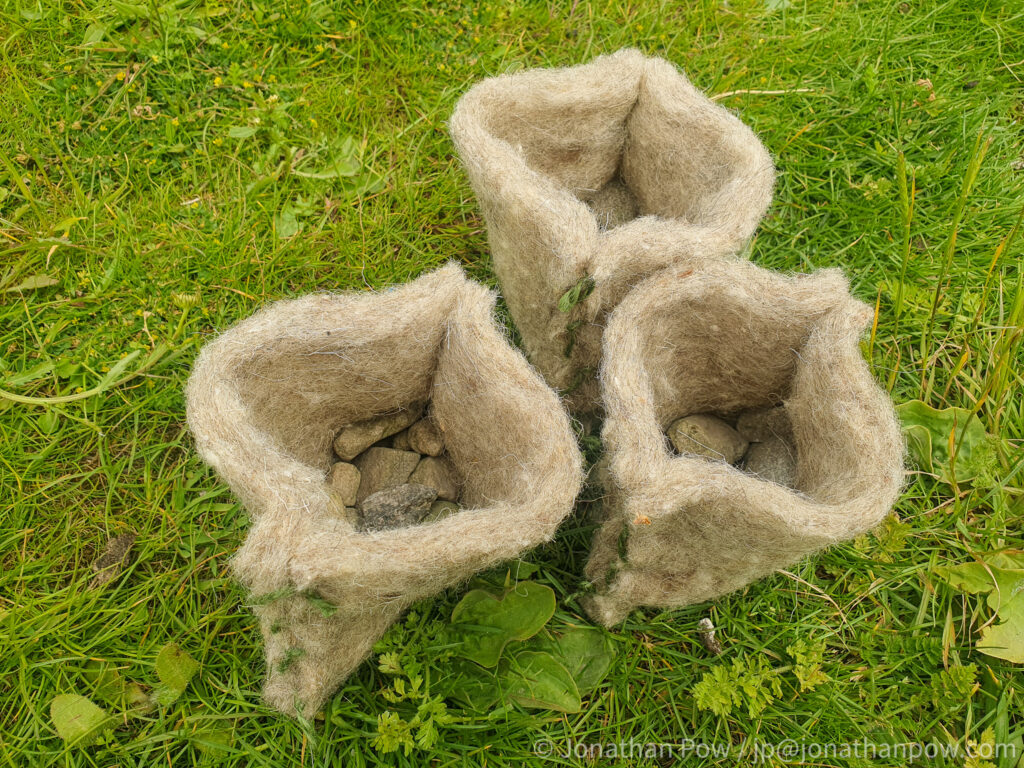



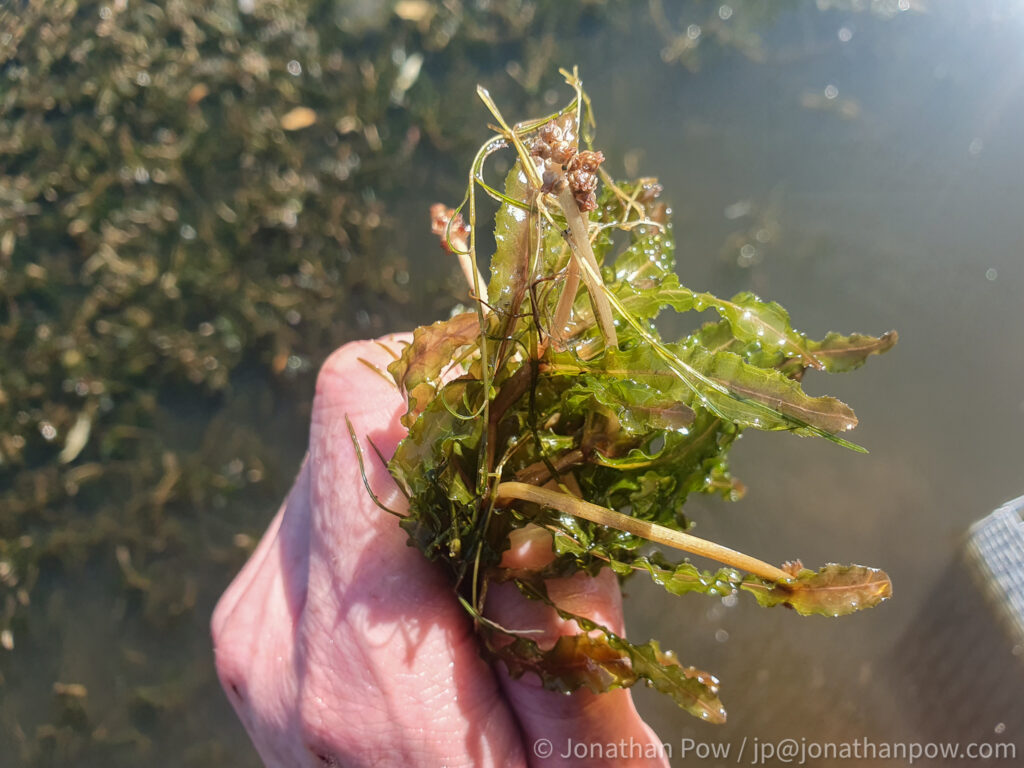



Leave a Reply